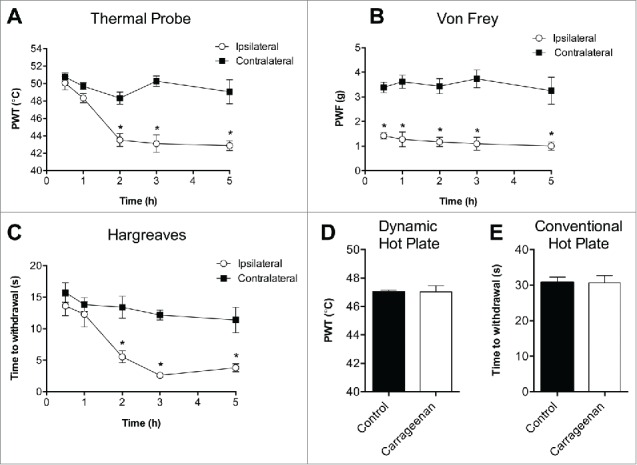Figure 2.

Behavioral assessment of carrageenan-induced thermal allodynia. (A) Time course of development of heat allodynia measured using the novel thermal probe test (n = 8). (B) Time course of development of mechanical allodynia measured using electronic von Frey (n = 8). (C) Time course of development of heat allodynia measured using the Hargreaves test (n = 8). No significant differences (5 h post injection of carrageenan) between vehicle control and carrageenan mice were detected on the hot plate using either the (D) dynamic hot plate or (E) conventional hot plate test at 50°C (n = 4 per group). Statistical significance was determined using t-test, *P < 0.05 compared to contralateral paw or vehicle control as indicated. Data are presented as mean ± SEM.
